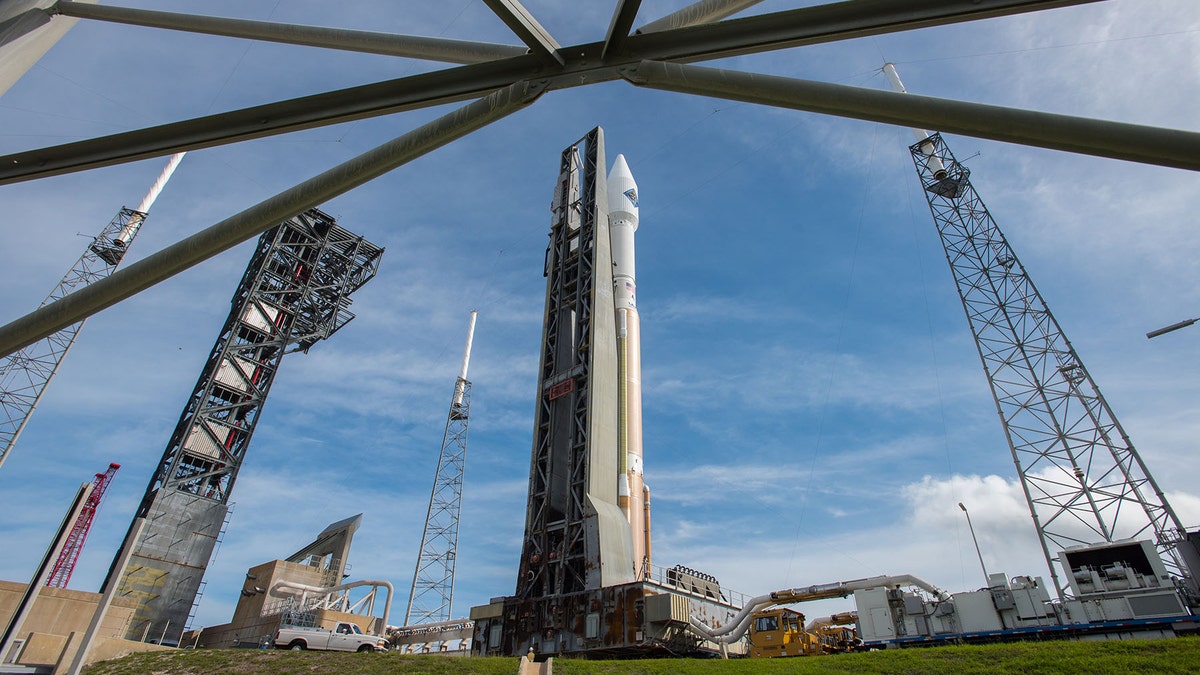
In this photo provided by the United Launch Alliance, an Atlas V rocket carrying the Orbital ATK Cygnus spacecraft, is rolled from the Vertical Integration Facility to a launch pad at the Cape Canaveral Air Force Station in Cape Canaveral, Fla., on Wednesday, Dec. 2, 2015. (United Launch Alliance via AP)
Bad weather forced NASA to delay the launch of an Atlas V rocket and unmanned Cygnus spacecraft on a resupply mission to the International Space Station Thursday.
The launch from Cape Canaveral Air Force Station in Florida had originally been scheduled for 5:55 p.m ET but was scrubbed at 6:11 p.m as a result of thick clouds and “disturbed weather,” according to NASA. A new 30 minute launch window has been scheduled for 5:33 p.m. ET Friday.
NASA says there is a 30 percent chance of favorable weather for Friday’s rescheduled launch.
Next launch attempt for #Cygnus to @Space_Station will be tomorrow, Friday, Dec. 4 at 5:33pm ET. pic.twitter.com/wM0eX4fXcS
— NASA Kennedy / KSC (@NASAKennedy) December 3, 2015
The launch will mark the resumption of commercial shipments to the International Space Station from U.S. soil, following months of frustrating delay.
The United Launch Alliance rocket will transport 7,400 pounds of space station supplies packed into the Cygnus capsule. The launch will be the first for Orbital ATK’s Cygnus aircraft since its Antares rocket exploded seconds after liftoff from NASA’s Wallops Flight Facility in Virginia on Oct. 28 2014.
Related: Private Cygnus spacecraft launch Thursday may be visible from US East Coast
Virginia-based Orbital purchased two United Launch Alliance rockets to fulfill its shipment obligations to NASA.
NASA's other contracted shipper, SpaceX, has been grounded since a failed launch in June. The California company expects to resume deliveries in January. It had the last U.S. resupply success, back in April.
Related: SpaceX may try land-based rocket landing this month, NASA official says
Orbital plans another shipment via an Atlas in March, followed by the return of Antares in May with a new type of Russian-built engine. A fire and explosion in the old Russian rocket engines doomed the October 2014 flight, the company's fourth resupply mission.
Russia and Japan have managed to fill the gap since April's U.S. resupply mission, but the 250-mile-high pantry isn't as full as it should be.
Related: Hubble spots faintest galaxy from early universe
"I'm guessing that Santa's sleigh is somewhere inside the Cygnus, and they're probably excited about their stockings coming up, too," Frank Culbertson, president of Orbital ATK’s space systems group, said at a news conference Wednesday.
Follow James Rogers on Twitter @jamesjrogers
The Associated Press contributed to this report.
